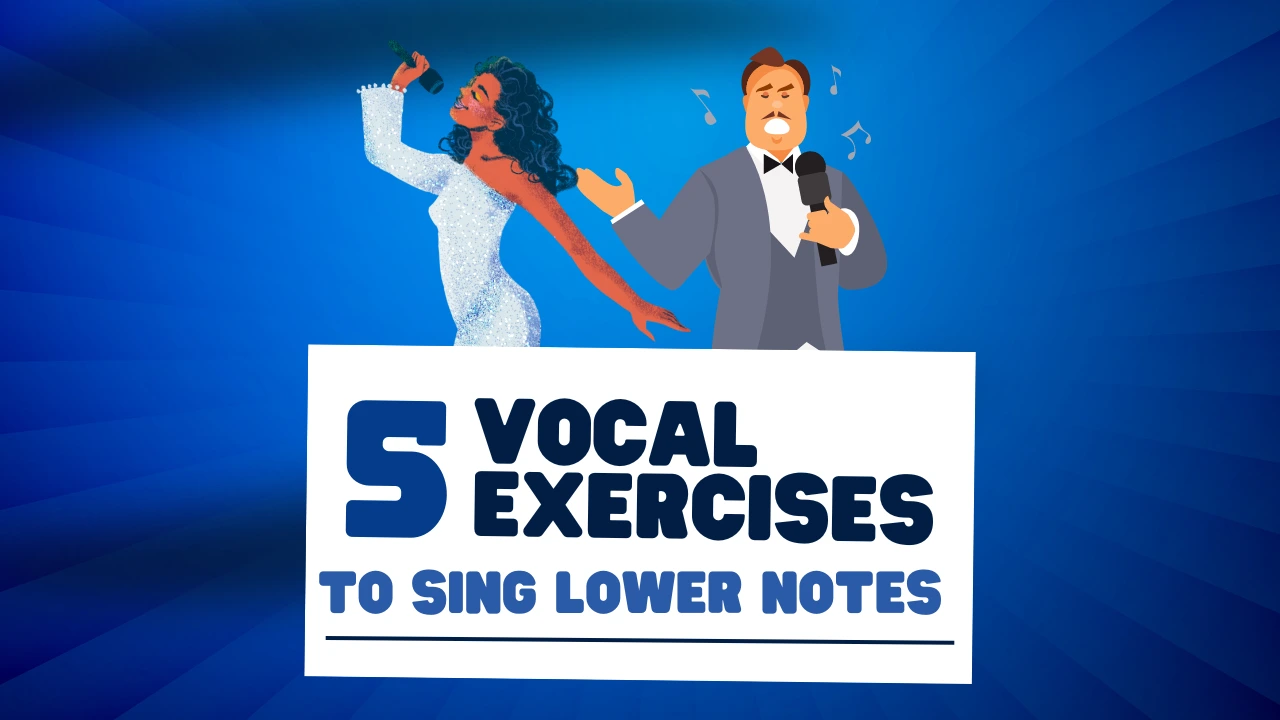Undoubtedly, the greatest challenge for singers is to sing Low notes with support. Beginners or not, this has been a difficult task. It’s sometimes a challenge for me too. Even after being in the business for almost a decade, Oh My God!, I have had to try this and that to crack that nut open.
Believe me it is easy peasy! Some say that it’s all in your head. One of my dear friends always says “Think High” or “Think Low” whenever we need to hit high notes or low notes.
Although these little tricks work like 20%, we absolutely need to rely on Vocal Exercises for Low Notes to instruct our vocal cords to bend the way we want them to.
In this blog let’s look at 5 amazing vocal exercises for low notes, tips on the best way to warm on low notes and a few on how to sing deeper as a singer that helped me train my lower vocal range.
Before we get into those exercises, let me paint you a simple picture about Vocal Range.
Vocal Cords And Lower Vocal Range.
Vocal cords the organ in your larynx that produces sound from our body.
Think of your vocal cords like a rubber band. it shrinks and elongates when we sing high and low notes respectively. Vocal cords should look like a normal rubber band that is not stretched. All you have to do is get your vocal cords to elongate or get fat to expand your lower vocal range. There is always the risk of stretching the vocal cords to train lower range just enough, ending up releasing extra tension. This only makes the vocal cords come together and the sound produced becomes feeble. The tone of our voice becomes airy and thin because of the incomplete closure of the vocal cords.
This could not sound like a real problem but supported tone can make you lose your vocal range. These low notes would not have any intensity thereby making your vocal range shorter.
Chest Voice to Control and Project Lower Register.
Chest voice could be your lowest voice register and the most essential puzzle piece to train lower vocal range. This is your normal speaking voice. When you sing in your chest voice you almost feel your chest area vibrating.
Voice in here usually has a powerful and deeper sound/ timbre. Every singer can sing lower notes easily in this register. This is exactly how you control and project a lower register. With proper support and practice, not just a professional singer, but anyone can effortlessly sing low notes and expand the vocal range.
It’s in this register, your vocal cords get stretched and wide open. This and practicing vocal exercises for low notes with an elongated vocal cords is the best way to warm up low notes.
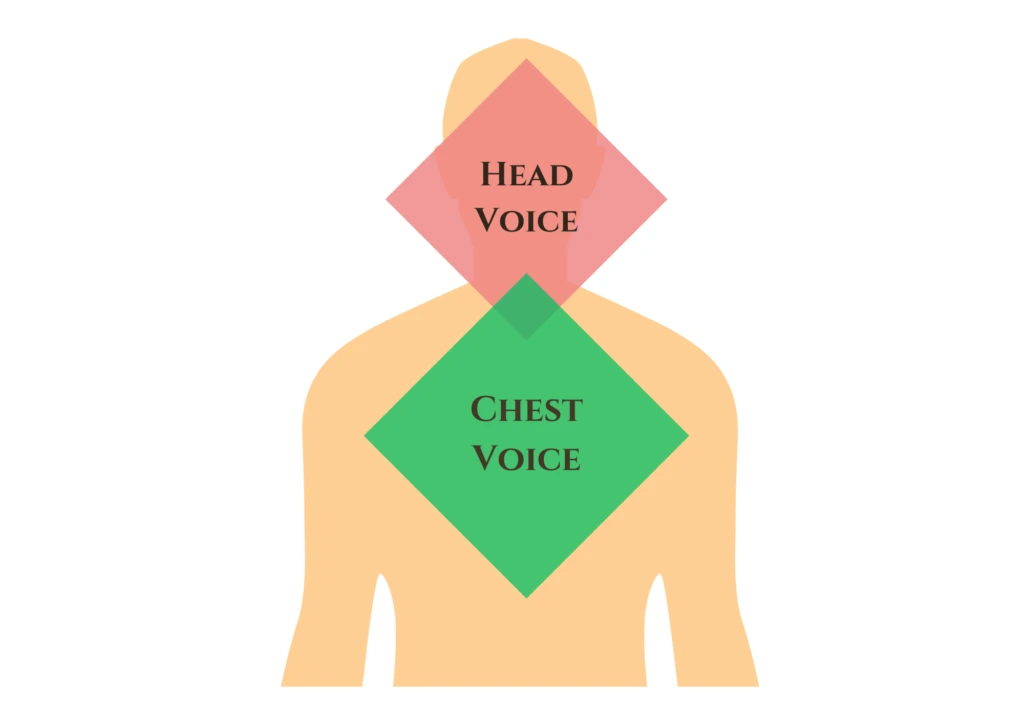
What is Vocal Range?
Simple definition of Vocal Range would read “range of pitches a human voice can produce.” Vocal ranges differ from person to person.. Basically, the characteristics of your voice and the range it has are determined by your vocal cords. Check out Anatomy of Vocal Cords, to understand the mechanism better. Simply put, range of tones your voice(vocal cords) can produce is vocal range.
Let me give a rough idea about the common ranges of Male and Female.
Males on an average can sing around 1.5 to 2 octaves. Some awesome singers like Freddie Mercury may go up to 4 or even 6 octaves. You can too! It all depends on how much you practice.
For females it can be 2 to 3 octaves with practice. Again legendary singers like Maria Carey and some can sing 5 octaves too.

Have you heard?
Technically, a Tim Storms of Missouri has set a record by proving that Human Voice can stretch for about 10 octaves!
Find Out Your Vocal Range
Let me quickly help you find your Vocal Range.
The simplest method is to sing pitches from low to high with the help of a piano. All you have to do is begin from the lowest pitch that you can comfortably sing and go up to the highest pitch that you can comfortably sing.
The keys of the piano will help you determine which pitch you are actually singing.
I can comfortably sing from F3 to C6. So that will be my Voice Range.
Use this Virtual Online Piano that can help you determine your voice range.
You can also use the MUSIC MASTER’S Vocal Range Test
5 Best Vocal Exercises for Low Notes.
After finding out your range, slowly head on to trying these amazing exercises that will help you sing Lower notes.
- Slides with descending notes.
- Solfege
- Descending arpeggios
- Chest voice exercise.
- Yawning exercise.
1. Vocal Slides For Relaxed Soft Palates.
Vocal slides have been proven to be very useful in achieving the goal of expanding my lower vocal range. I still sing them everyday during my practice sessions. Simply with an “oo” or “ah” sound or with any vowel sound actually works. Try sliding from your highest to the lowest note. You can do this up and down according to your comfortability. Remember not to push too much both ways, otherwise screaming this loud could easily hurt your vocal cords. This does sound funny but believe me it is very helpful to train lower vocal range.

Start singing from C4 to C3 and slide through the notes C4 to C3. do not sing out each note rather use a glide. Imagine the slides that we play at the park. That should give an idea! Wink!
Keep going until you reach your lowest note. Everyday you can try to push a semitone lower to sing deeper as a singer.
2. Solfeggio for Expanding Low Range.
What can’t the solfege do? This is my go to vocal exercise for low notes for all my kids and beginners. We must all be familiar with the solfege syllables. Since our goal is to sing low notes, we will sing the solfeggio in the descending order.

We are starting with DO TI LA SOL FA MI RE DO (moving from higher to lower). Let’s start from G major scale and descend down. I have given instances for 2 scales. Try to sing these scales in descending order till your lowest pitch. This will definitely help you to control and project lower register. Everyday you can try to push a semitone lower.
3. Descending Arpeggios.
Arpeggios are the notes of a chord played or sung either in ascending or descending order or both. Arpeggios are another go to exercise of any singer during warm-up sessions. This can be sung with vowels(ah-eh-ee-oh-oo) or yah’s and yoh’s, even numbers and alphabets work.
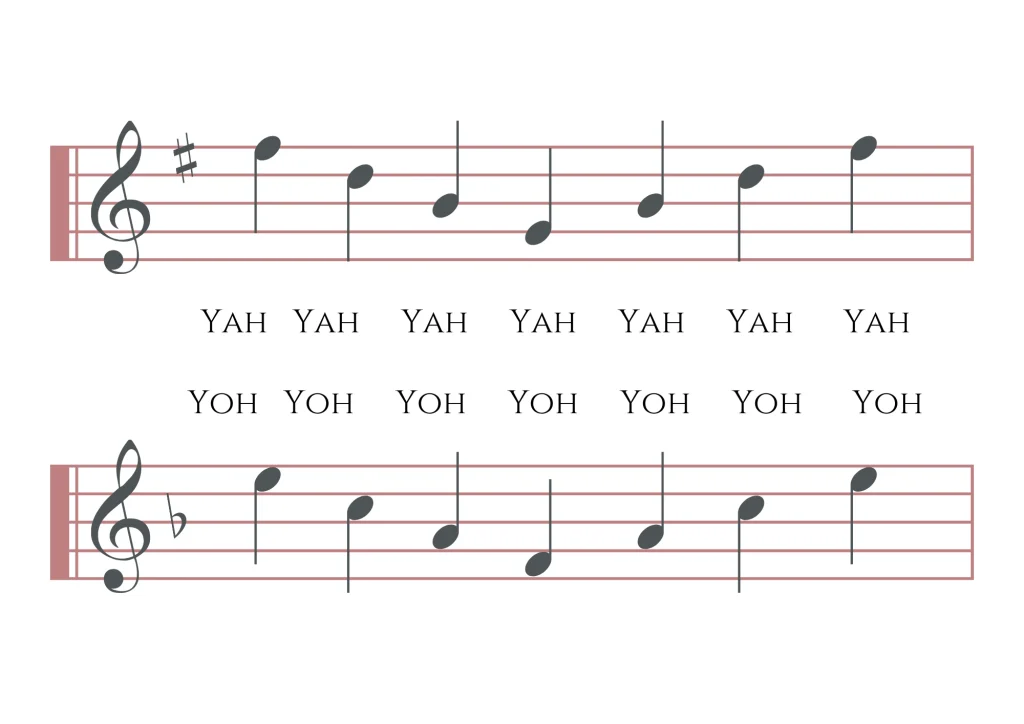
Since we’re trying to increase our lower vocal range, we are required to sing these arpeggios in downward movement. Arpeggios in downward movement are one of the best ways to warm up low notes. Start singing the arpeggio in G major and slowly decrease the pitches. Keep on moving until you reach your lowest pitch and try to extend a semitone everyday.
4. Enhance Your Chest Voice.
Now we know that the more Relaxed your vocal cords are in your chest voice, the more you can sing deeper and lower as a singer. Here is a simple yet effective exercise to help you sing low notes.
I have added words to this exercise. “I sing with an open mouth”. You can sing with any sounds that you like. Make sure you relax your jaws and move your lower jaw up and down with each word.
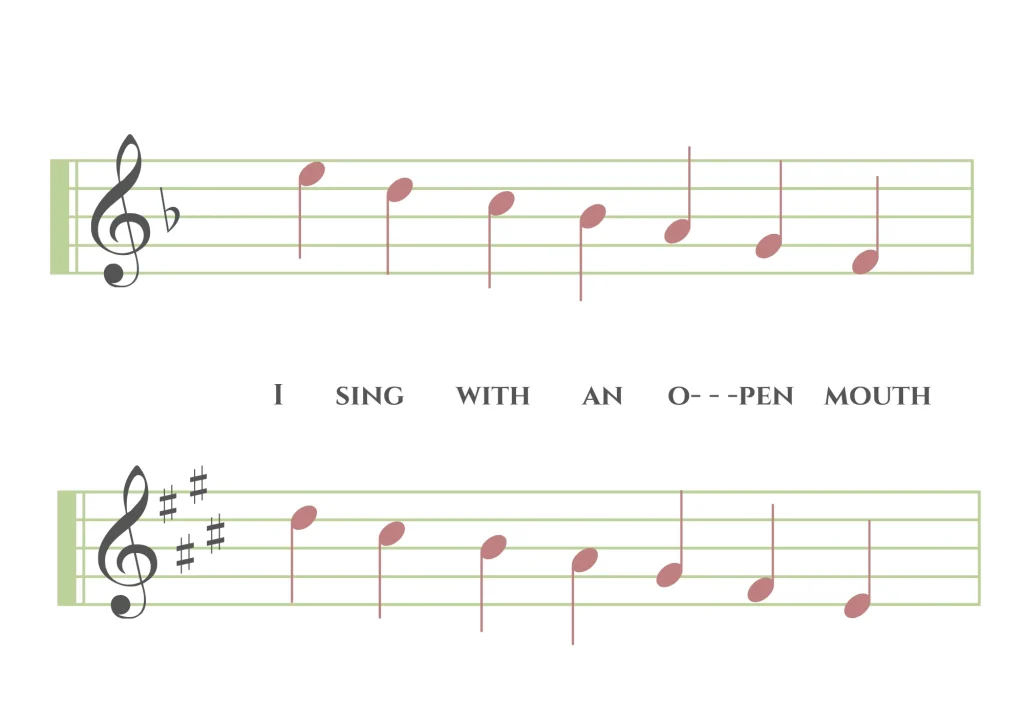
Start singing from your comfortable scale and keep decreasing it. Remember to not tilt your head down since it is like a reflex. Keep your head in the eye level and have your breath support you.
5. I Call This Yawning Exercise.
This really is intriguing. All you have to do is yawn into a note. Yep! You heard me right.
Focus on this open/relaxed feeling. Try a glissando (slide between notes) but with a yawning effect to warm up the low notes. .
You should be feeling your soft palate lifting up when you sing “oh or ah” sound like yawning.
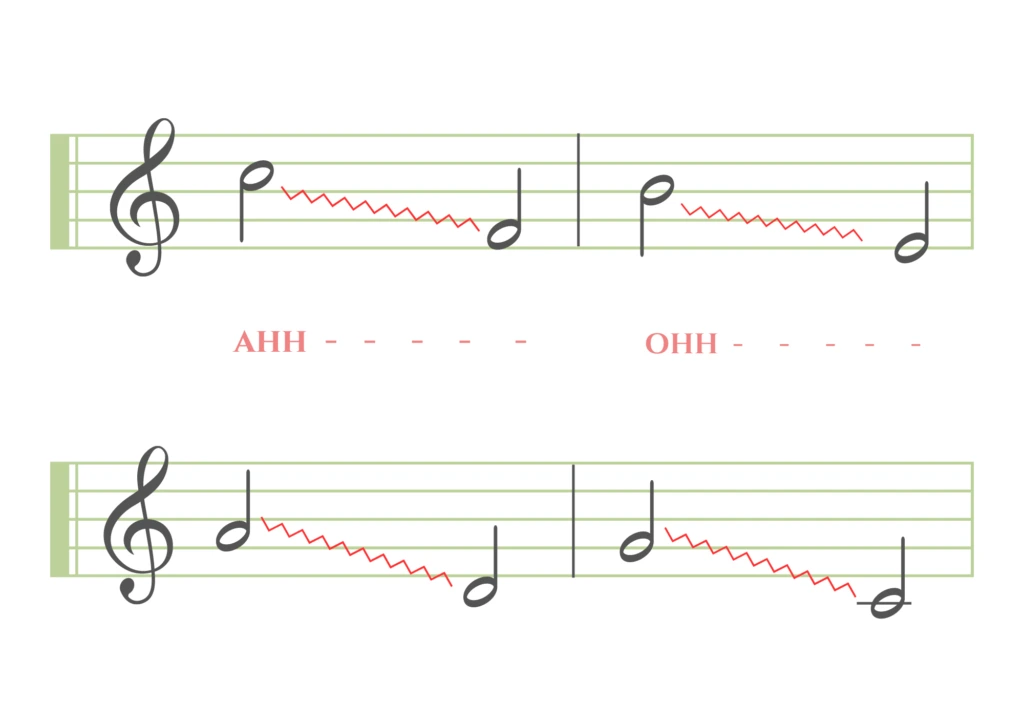
For instance, let us do this in the interval of fifths. Here is an illustration of this glissando starting on C in a f major scale and ending on a tonic, that is, F. Try it the same way with decreasing its pitch. You may hear the sound of Vocal Fry at the end of each phrase. This means that your vocal cords are absolutely relaxed.
Pointers to Train the Lower Vocal Range.
First and foremost thing is, practicing warm-up drills or vocal exercises for low notes. Try the exercises mentioned above for best results.
So here is a trick that I picked up while I was trying to control and project my lower register. I would try different vowel sounds in different mouth shapes, tongue position and volumes to figure the correct resonance. I would recommend this pointer to everyone who tries to train lower vocal range.
Thirdly, getting your breathing right can help you alot, especially when practicing vocal exercises for low notes. Try doing breathing exercises along with these vocal exercises and having better breath control definitely helps to sing deeper as a singer.
Lastly, you need practice and patience. Everything doesn’t happen in a day. so keep trying little by little everyday.
Closing Thoughts!
The most important thought you need to remember is, like i said earlier, Changes happen in time, not overnight. You will have to practice consistently everyday. Secondly, relax and keep trying these exercises. I would recommend that it’s best to have a guide to direct you to the right ways. So don’t wait anymore and book a free demo with us.
FAQs
1. How can I sing lower notes comfortably?
You can sing low notes comfortably by having relaxed vocal cords and by practicing a few exercises.
2. Are there exercises to increase my vocal range?
Yes, there are many exercises to increase your vocal range. I have mentioned 5 simple yet amazing exercises in this blog.
3. What happens if I strain my voice trying to sing lower?
There will be sharp pain in your vocal cords when you overuse them or strain your voice while trying to sing low notes.
4. I can’t hit those low notes in my favorite song, what can I do?
You can and should practice the above mentioned exercises with relaxed vocal cords.

